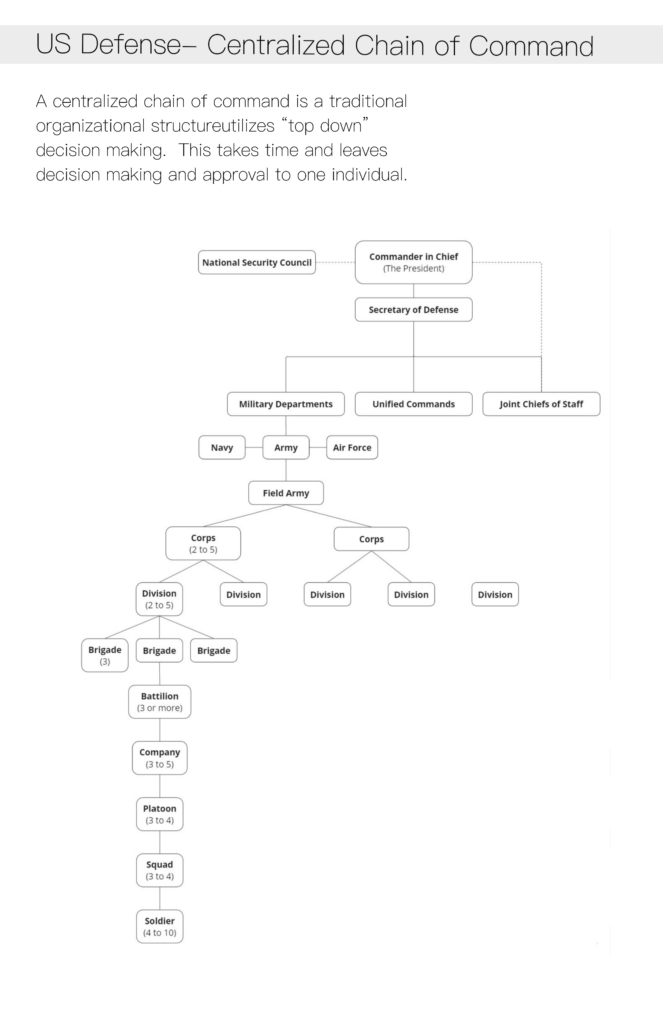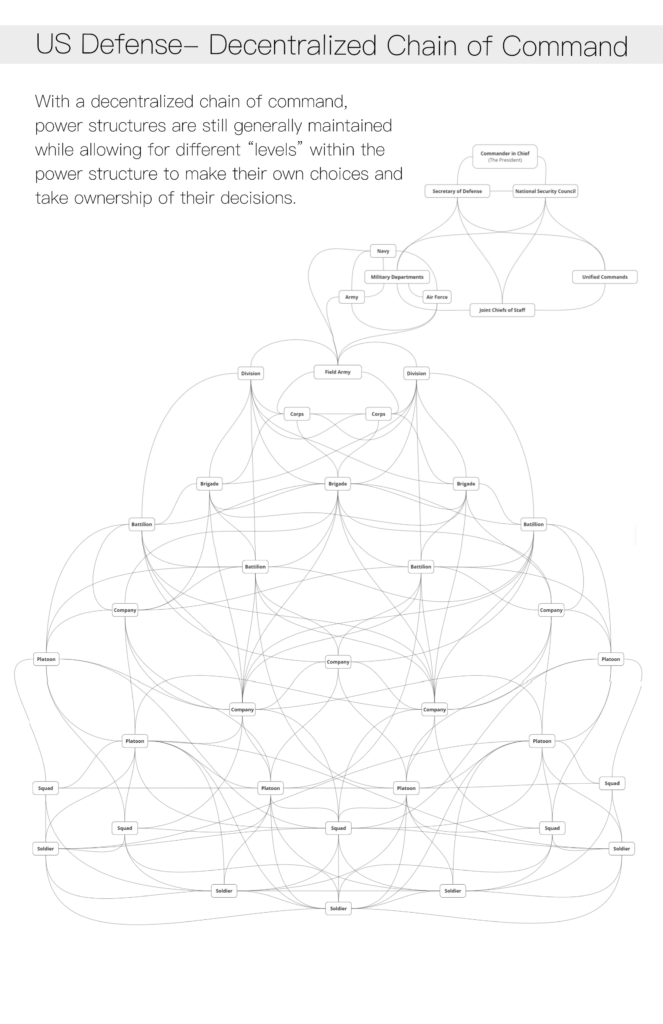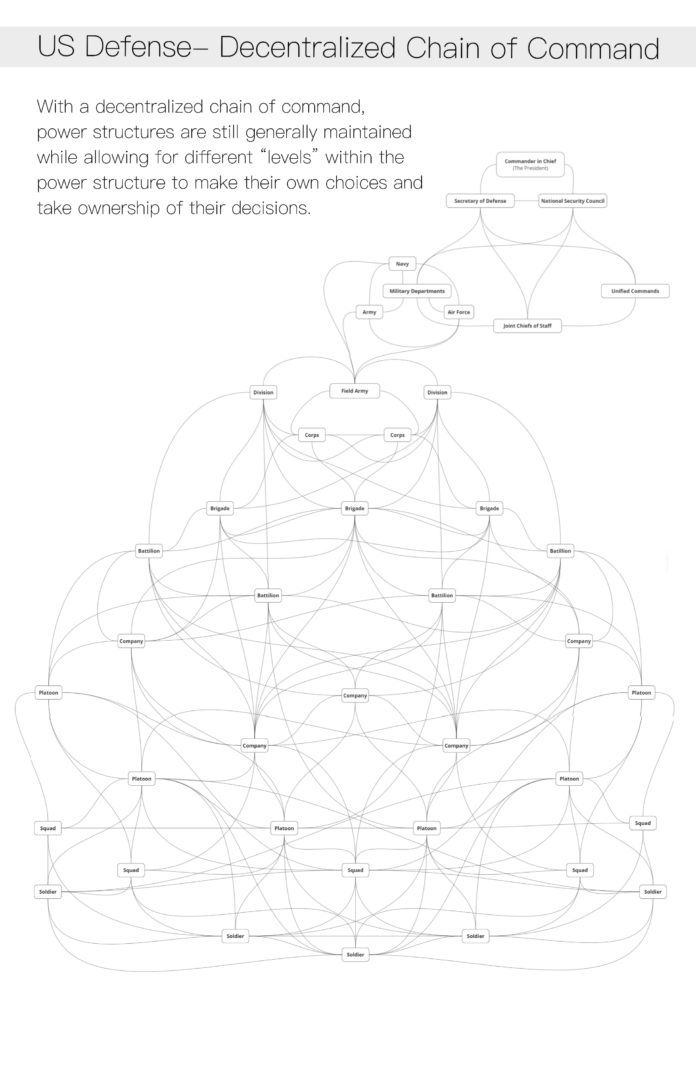

Description:
The Decentralized Power Structure for the US Military features a flexible, dynamic flow, where different “levels” are intermixed, and are constantly communicating within their own levels and with higher and lower levels. In this decentralized structure, everyone on the team is aware of the mission at hand, and feel empowered to make decisions by themselves, while constantly communicating those decisions with others. Instead of a “top-down” effect of power and decision-making, this structure utilizes a web of decision-making and allows for quicker decisions and swift action.
Analysis:
The current structure of the US Military, as well as most traditional structures of power, operate in a centralized fashion, designating one individual to make key decisions and orders, which “trickle down” through the subsequent levels of power, until those at the very bottom of the power structure are informed. Everyone in their designated “levels of power” are assigned specific duties and roles to follow, and they each perform specific functions within the whole. Though this ensures that everyone has adequate expertise and familiarity with their areas of work, it restricts flexibility or the opportunity for individuals to take on additional roles.
With a decentralized structure of power, there is no singular individual with decision-making responsibilities, but a web of individuals who work together on doing so. Instead of decisions “trickling down,” they are able to “flow throughout” to all parties involved. Constant communication and collaboration across roles is key. In a decentralized business structure, individuals must be able to wear many “hats,” allowing for flexibility in their roles, and encourages cross-collaboration between disciplines.




